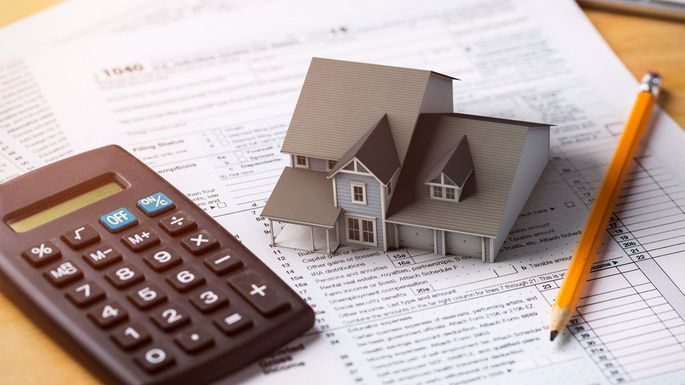There are many factors for economic growth and development of a country. One of them is to increase the purchasing power of the population. Thus, GDP is calculated, which could show the financial stability of companies and external well-being in the economy. This indicator includes the sum of all goods and services that the population will use in monetary terms.
The bottom line definitely affects inflation. Analysts of all countries conduct similar macroeconomic studies, because without them it is difficult to obtain reliable data on the level of welfare of citizens and financial stability in the country.
Definition Description
To explain what a deflator is, you can cite just two words. This term refers to a specific statistical coefficient. Experts use a deflator to correctly calculate various financial indicators in monetary terms. We can say that this is a kind of index of price increase in numerical terms. The deflator is mainly used to compare current price indicators with those from any past period.
In other words, this indicator clearly demonstrates how much the cost of goods and services for industrial and domestic purposes has changed. Using the deflator, you can try to some extent to smooth out the sharp corners between the market price and its basic variation. Typically, when recounting, two main indicators are applied - DVVP and DVNP. The first is deciphered as a gross domestic product deflator, and the second is a gross national product deflator.

GDP and its indices
It is considered one of the main macroeconomic indicators. Indicates the total value of all goods that were produced within the state for any specific time period. The gross domestic product deflator also has a second name - the price indirect deflator. It is equal to the ratio of the total cost of a set of services or goods in the current year to exactly the same indicator for the previous year. The obtained value clearly gives an idea of how the price level in the economy ultimately affected the decrease or increase in GDP.
Calculations are carried out in one of two currently relevant ways. In the first case, it is necessary to take a pre-agreed set of goods or services as a base, indicating its total cost in the current year. The numerator records the price of products that were created for a standard time period. Cost applies current. The denominator should indicate the value in the base prices for the period. This option is called the Laspeyres index.
The second method differs in that the numerator records the value of goods or services for the current period, and the denominator records the value of the products that were created during the reporting period of time in basic prices. Outwardly, the Paasche index resembles the previous version. However, it is used to calculate the current period.

Indicators for calculating the GDP deflator
In total, two factors are applied. In calculating the GDP deflator, the nominal and real GDP deflators play a role. The first corresponds to the current state of affairs, and the second shows the level in the base time period. The above Paache and Laspeyres indices have a number of well-known disadvantages. For example, with their help it is impossible to see the total change in the price level.For this reason, analysts often additionally use the Fisher index, which makes it possible to correct omissions in the calculations. As a result, the geometric mean of the Paache and Laisperes indices is presented in the reports.
The Fisher system still provides the most accurate data. The correct calculation of the price level and inflation is calculated according to the algorithm below:
- If the deflator is equal to unity, then the economic industry is experiencing a period of stagnation.
- A smaller indicator is characterized by the fact that real GDP exceeds nominal. In this regard, it should be concluded that the true price level has become lower, and among the population one can note the phenomenon of deflation, that is, an increase in income.
- With a value above unity, real GDP is less than nominal, which leads to inflationary processes due to a decrease in the true price level. The money supply is gradually depreciating, and the incomes of the population and enterprises begin to fall.

Deflator and price index
Often these terms are identified by an unprepared reader. When asked about what a deflator is, you can hear that it is a complete analogue of the price index in numerical terms, because the difference between them is quite insignificant. In fact, most of the legislations of European countries and the Russian Federation apply such indicators for various purposes.
The same price index is necessary for the annual economic planning of the country's budget. With its help, the sizes of social benefits are calculated, and also settlements are made with various state enterprises. The country's income and expenses largely depend on the differences between the numerical indicators of GDP.
You can describe in more detail the difference between the consumer price deflator and the CPI by citing a number of differences. Such a list is presented below:
- The GDP deflator is compared with the Paasche index, and the current time period is used as the basis for the calculations.
- The price index also necessarily takes into account imported goods and their value. For a deflator, only products that were created domestically participate in the calculations.
- In calculating the CPI, the Laspeyres index is taken as the basis. Only products from the base period are taken into account.
- To calculate the GDP deflator indicator, all goods and services in the domestic market are taken into account. This means that any changes in demand among the population or the appearance of new products are always taken into account.
- The CPI formula includes only those prices of goods that are in the consumer basket.
Property tax deflator in 2019
The determination of the tax base, based on the inventory value, requires the consistent implementation of the following actions. It is necessary to multiply the total price of all objects by a special deflator coefficient. This takes into account the inventory property, which is taxed.
Detailed information is given in paragraph 4 of Article 404 of the Tax Code. Depending on how much the result is, the size of the tax rate for a citizen will be determined. For example, if the inventory value is in the range from 261 552 rubles to 300 000 rubles, or from 435 920 rubles to 500 000 rubles, then the state will have to pay more significant deductions.
For individuals, the situation this year will change as follows. The property tax deflator will be deducted from the value of the inventory property. After the obtained value is multiplied by a coefficient.
In 2018, the deflator index for this action was 1.481. Now the current value is 1.518. As an example, consider an apartment worth 2.5 million rubles. Together with the applied deflator coefficient, the final price will amount to 3.795 million rubles. In addition, from 2020, the calculation will be carried out at the cadastral value.

Deflator in various industries
There have been no official publication of values, however, forecasts for 2019-2021 have already been submitted. Specialists of the Ministry of Economic Development posted tables on their website. However, in the near future, indicators may still be slightly adjusted.
Outcomes may be affected by various reforms, including pension and tax. Recent changes in legislation have led to an increase in the age at which citizens can go on a well-deserved rest. As for the tax reform, it promoted an increase in excise taxes on fuel.
At the same time, experts say that companies can now plan their procurement activities at current ratios. For example, the deflator for construction is 105.9. Last year, the value was established at around 106.8. For 2020 and 2021, forecasting assumes a further decrease in the coefficients to 105.2 and 104.9, respectively. Other industrial and manufacturing sectors also show a declining trend.
Formula for calculating
The final calculation is made by dividing the nominal indicator of the gross domestic product by the deflator and then multiplying the result by one hundred. Thus, you can get the value of real GDP. This process has its own name. In a general sense, it can be described as the deflation of nominal gross domestic product into real.
In calculating the nominal GDP, the prices of goods and services for the current year are used. In the case of real gross domestic product, the values for the base time period apply. If the obtained indicator by the GDP deflator formula exceeds one hundred percent, then we should talk about a general decrease in the income level of the population. If the value is below this threshold, then deflation processes are characteristic of the current period in the economy.

Coefficient for calculating taxes
A certain value is used for various types of taxation, including the simplified tax system, UTII, personal income tax, trade tax and patent. The coefficient is designed to adjust the totality of revenues that give enterprises the right to transition and work on a simplified system.
However, specialists from the Russian Ministry of Economic Development stated that up to 2020, it is not necessary to calculate income limits. This is legally established in paragraph 4 of Article 5 of the Federal Law-243 dated July 3, 2016. According to the deflator coefficient for 2018, the company will be able to freely switch to a simplified taxation system, provided that its income for the nine months of 2017 did not exceed 112.5 million rubles. At the same time, the enterprise can be located at the STS, if it does not go beyond 150 million rubles.
The so-called “chief executives” also use the deflator coefficient in order to adjust the basic profitability indicators of any particular type of activity. The indicator in 2017 was 1,798. At the same time, the UTII deflator coefficient in 2018 increased to 1.868. In percentage terms, this means an increase of 3.4 percent. As a result, it turns out that even if the physical indicator is unchanged by type of activity and the regional authorities set the size of K2 at the same level, the “imputed” tax will still become larger.
The purpose of the economic deflator
The coefficient is being developed by the Federal State Statistics Service. In turn, the Ministry of Economic Development website publishes an annual report with current data. In this case, all values of the deflator values are repeated three times. The calculation of gross domestic product is indicated the same number of times.
The fact is that initially only the preliminary predicted option is offered to familiarize portal users. After published data viewing and analysis. After a certain period of time, the authorities provide calculated final data that can no longer be changed in the future.
By the issued index, one can trace the current level of inflation or deflation in the country. Viewing is carried out in relation to any selected settlement period. To assess the degree of depreciation of funds, two main indicators are used - the deflator and consumer prices.
The inflation rate is measured by government analysts in order to gain certain leverage. Thus, the authorities influence the change in the level of current prices that are relevant in the domestic market at the moment, and also adjust the basic cost of goods and services. If we talk about what a deflator is, then it should be noted that this indicator serves as an estimate. It allows you to clarify the degree of change in profit and other economic values.

Index deficiencies and calculation errors
Despite the many positive aspects of having such a coefficient, it has a number of certain disadvantages. For example, the dynamics of real prices at an increased cost of goods and services is too low, and at a lower - excessively high.
The presence of the Paache index is also making a negative contribution. Because of it, it is not possible to view the income effect of price changes in the consumer basket of the population. The same goes for the Laspeyres index. The latter demonstrates only the effect of income, but the substitution effect is not taken into account.
Due to the fact that the calculation is carried out in relation to the current and any past periods with a certain level of nominal GDP, the deflator may not be calculated correctly. Among the most common mistakes it should be noted that accounting for imported goods on a par with domestic ones and accounting for substituting expensive products for cheaper ones. Such complex and time-consuming work should be carried out by qualified specialists from the Ministry of Economic Development. Private calculations almost always have a critical number of errors and shortcomings in calculating the coefficient.
Reasons for GDP growth and decline in 2018
The following factors are considered to be positive factors:
- an increase in military spending on government orders, in particular, on the construction of new ships;
- growing domestic consumer demand for Russian-made goods due to a series of sanctions prohibiting the import of imported products.
Unfortunately, there were much more negative factors over the past year. The effect of inflation on the deflator can be traced due to the following changes:
- reduction of budget deficits;
- decrease in incomes of the population;
- falling prices for oil and products from it;
- decrease in the flow of investments in operating domestic enterprises;
- tense political relations of the country with Europe and the USA.

How the state supports the economy
The Ministry of Economic Development of Russia explains to citizens what a deflator is, and tries to correct the situation through the adoption of certain measures, including:
- development of civil society institutions;
- quality level of service provision from the state;
- improving the efficiency of the management system;
- supporting innovation and financing technology development;
- creating a solid platform for opening a private business.
Responsible persons also declare that budget funds will henceforth be spent more competently and purposefully. In the future, increased control over state property will help to rectify the situation in the country and improve the quality of life for its population.
